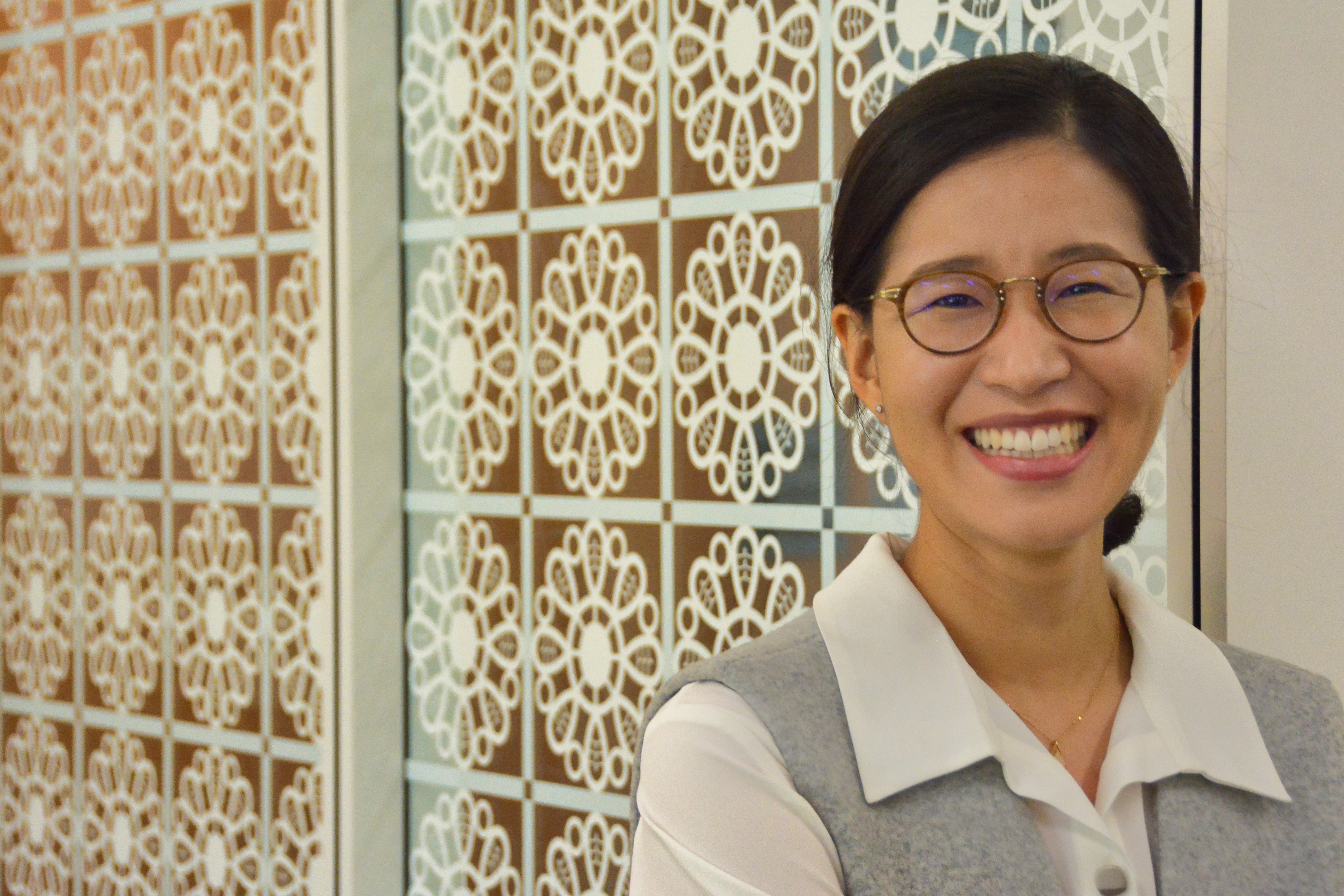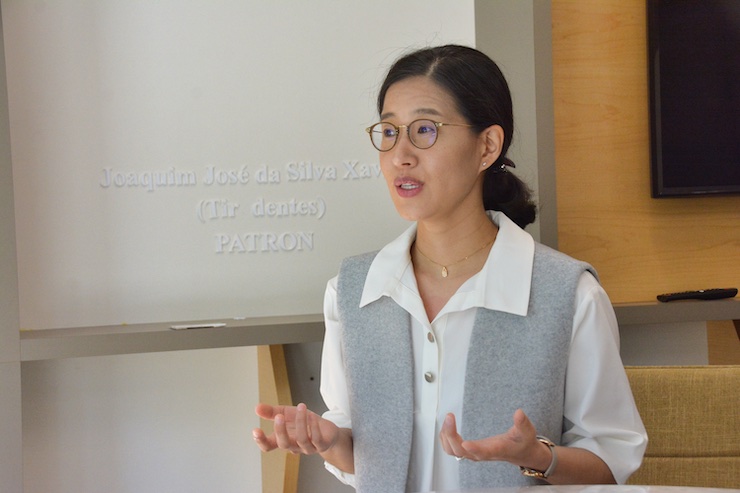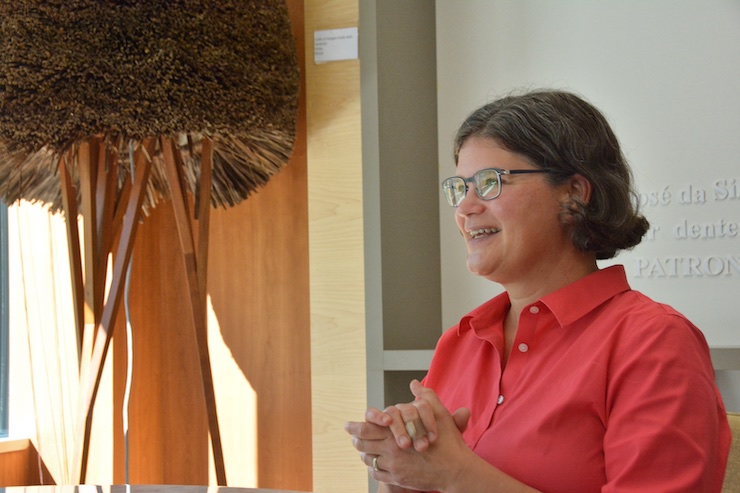A Fresh Take on “Diversity”: Doctoral Researcher at UMass Boston is Shaking Up Early Education
What makes someone “diverse” in a research study?

“ It has huge implications ... we've missed something really important in decades or centuries of research. ”
Are they a different race? Are they an immigrant? Are their parents immigrants? Do they speak another language? Do they speak it at home?
If you are doing research or reading it, odds are that you probably don’t know, and that’s a problem.
It caught the attention of Yujin Lee, a doctoral candidate and research assistant at the UMass Boston Institute for Early Education Leadership and Innovation, as she was planning her research on culturally and linguistically diverse (CLD) children in Head Start, a federally-funded early childhood program for low-income families.
Lee, herself an immigrant, is very much aware that research tends to group “diverse” populations together despite major differences like speaking a different language or even being from a different country. Knowing that, she wanted to design her research to be more multidimensional and inclusive different aspects of what makes someone “diverse”.
“One of the notable patterns emerging in CLD children is that there is great diversity within this population … It got us to think how we can design the research that more precisely describes and captures those within-group diversities across the CLD sub-populations,” she said.
“Every individual occupies multiple social positions of differences simultaneously, in terms of nativity, language, race, origin, and other [factors].”

Lee, speaking about her research and getting to the core of what "diversity" can mean.
To paint a more well-rounded picture of CLD children from low-income families, Lee devised a system that used grouped a nationally representative sample of 3,000 Head Start students based on five cultural characteristics, including their race, whether their mother was an immigrant, whether their father was an immigrant, whether their primary parent’s first language was non-English, and whether a language besides English was spoken at home.
“The constellation of those social positions of differences jointly craft intersections and may contribute to differences in children's access to opportunities and everyday experiences and interactions with other people,” said Lee, referencing a school of thought known as intersectionality theory, and how it shapes development in young children.
“My coauthors and I wanted to examine how those intersections were related to subgroup differences in early experiences and school readiness patterns.”
The mother of a young child herself, Lee’s dive into how research defines CLD populations was also driven by what she and her husband wanted for their own daughter, and how they hoped research did and did not define her.
“We live in a community where many people are coming from diverse cultural backgrounds … and from a researcher’s perspective, my child could be defined as a child of immigrants [like many others in the community]. But, this single factor may play out differently in combination with other contextual factors, such as language use at home, race, family nativity status, and country of origin. That is often obscured in the literature.”
By simultaneously looking at multiple background characteristics related to “diversity”, her research provided a new lens for understanding CLD children’s school readiness. Specifically, it pointed out that different combinations of the background characteristics may contribute to unique strengths and needs across these children.
For example, many CLD children demonstrated lower English language skills before kindergarten entrance. However, racial minorities growing up in multilingual homes demonstrated similar levels of English language skills as their non-CLD peers. It may indicate that multilingualism acted as a developmental asset.
Lee’s research also found the developmental strengths of the seemingly most at-risk CLD subgroup, racial minority children of immigrants from dominantly non-English speaking homes. These children exhibited higher social skills than their counterparts, despite having disadvantageous at Head Start entry.
The study’s big takeaway: diving deeper into “diversity” can be a predicting factor in children’s educational outcomes. It also showed clearly that the ways that we measure CLD children’s learning and development may not be an accurate representation of their strengths and needs.
“What Yujin did as the lead author in this paper was bring a very different lens and say there is so much more to this story than what's in the literature right now,” said Anne Douglass, professor and executive director of the Institute for Early Education Leadership and Innovation, and Lee’s faculty advisor for the research.

Anne Douglass, commenting on Lee's research during an interview.
“It has huge implications for the field and implications for research, because it shows that we've missed something really important in decades or centuries of research … The assessments we have were really built based on norms about white children and white families. And I think this suggests we're missing a lot of really important information,” she continued.
“We're missing strengths and assets that are essential for children to thrive, and that's a huge problem.”
The research is introductory and only includes a small subset of the population, but it could have a big effect on the early education field if more studies like it are pursued.
“It shows that there are things we could be doing professionally with teachers in classrooms and leaders of Head Start programs to understand how they could use this kind of information to influence their practice,” said Douglass. “And maybe most importantly from a practical application standpoint, [deal with] the assessment issue that it suggests.”
Ultimately, for that to happen, Lee knows that it comes down to resources.
“I want to see added resources for families of CLD children, resources within their neighborhood such as early education programs, and to see whether those resources can make those people move forward and promote their success and their children’s success,” she said.
